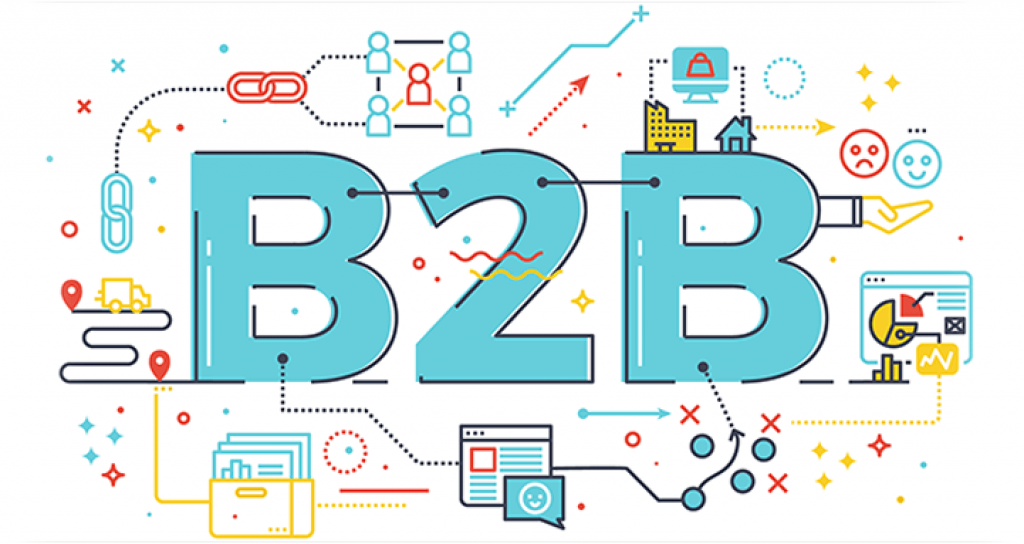- September 12, 2024
- Digital Marketing
Best B2B Platform for Export Business in the World 2025

The business-to-business or B2B environment is continuously evolving. And day by day new digital platforms are coming up and becoming an essential part of global trade. In the year 2025, the B2B platforms will continue to revolutionise how businesses connect, buy, and sell across borders.
These platforms offer the exporters a chance to reach international buyers with ease and provide everything from logistics support to payment processing. Now, if you are an exporter and looking to grow your business or enter new markets, then choosing the right B2B platform is essential.
In this blog, we will cover the top b2b platforms for export business in the year 2025.
Why B2B Platforms are Essential for Export Business
It is important for you as an exporter to know why B2B platforms are essential for your export business even before you decide on the platform. Here are some key reasons for you to know;
- You Get Global Reach
The B2B platform helps you connect with buyers and suppliers worldwide. They open up new markets and opportunities.
- Budget Friendly
When you connect with the marketplace, it reduces the need for you to direct the intermediaries and lowers the transaction costs.
- Make the Exporting Process Smooth
These platforms offer you tools and services that simplify the export process from logistics to payment solutions.
- Great Networking Opportunities
The B2B platforms also facilitate the connections between the businesses and enable them to develop partnerships and collaborations.
Top B2B Platforms for Export Business in 2025
Here are the top b2b platforms that we bring for you that can help connect you with potential buyers throughout the world.
- eWorldtrade
The eWorldtrade website remains the dominant and leading player in the B2B industry. The platform is known because of its extensive network and comprehensive services. The e-commerce website was founded in 2006 and since then it has grown to become a global leader. eWorldtrade has connected millions of buyers and suppliers and still working on it.
Highlighted Features of eWorldtrade
- eWorldtrade.com offers you a wide range of products – from electronics to textiles; you can export a variety of products.
- The trade assurance feature makes sure a secure transaction to protect the buyers as well as the exporters.
- eWorldtrade.com also offers end-to-end logistics solutions that simplify the shopping process.
Benefits for Exporters
- With millions of users worldwide, you get the gain of significant visibility.
- Trade assurance builds trust and reduces any risk of fraud.
- From marketing to logistics, the platform offers a one-stop solution for exporters.
- Alibaba
Alibaba has emerged as one of the leading contenders in the B2B industry. It is offering innovative solutions for exporters. The platform is focusing on user experience and efficiency and has become the preferred choice among businesses. Within a very short span of time, the marketplace has become the most important part of the b2b world. And it is continuously making new ways to serve the users as well as it can.
Highlighted Features of Alibaba
- The platform is designed for ease of use which makes it accessible for businesses of all sizes – so if you are a small business or startup, this is your chance to connect with the platform.
- Alibaba makes sure that all the buyers are verified on the marketplace. It enhances the trust and reliability among the exporters and builds credibility.
- Exporters can customize their experience by choosing from various membership plans and expanding their reach with additional benefits.
Benefits for Exporters
- The simple interface simplifies the process of finding and connecting with buyers.
- Verified supplies and buyers mean fewer risks and more reliable partnerships.
- Customizable solutions allow you to select services that best meet your needs.
- Global Sources
Global Sources is another top B2B marketplace that is particularly strong in the electronic and hardware sectors. So, if you belong to this industry then, you can connect with the marketplace. It was established over 50 years ago and it has a long-standing reputation for connecting global buyers and suppliers.
Highlighted Features of Global Sources
- The platform specializes in specific industries and offers in-depth expertise and resources.
- It organized major trade shows and provided opportunities for face-to-face networking.
- The marketplace also offers valuable market data and analysis to help exporters make the right decisions.
Benefits for Exporters
- The specialized focus makes sure better support and resources for certain sectors.
- Trade shows and events allow you to connect directly with the buyers.
- Market insights help you as the exporters to identify the trends and opportunities.
- Made in China
Made in China is a well-established b2b platform that connects Chinese manufacturers with global buyers. The platform has its focus on product quality and certifications which makes this platform a go-to solution for the business who wants to buy cost-effective but reliable products. And it enhances the chance of the exporters to get their business soared through Made in China.
Highlighted Features of Global Sources
- Made in China makes sure that all products meet international quality and safety standards.
- It offers a unique feature where suppliers can provide detailed product videos to showcase their offerings.
- The platform includes advanced communication tools that allow you to interact with potential buyers.
Benefits for Exporters
- Certified products give buyers confidence in their purchases which gradually increases the chance of them connecting with you as the exporter.
- The inclusion of videos helps in presenting their products more effectively.
- Exporters looking to source goods from China can use the extensive network of manufacturers.
- Thomasnet
Thomasnet.com is often referred to as the go-to resource for industrial buyers. And it is the B2B platform that is focused on connecting industrial suppliers with buyers. It has over 120 years of experience in the field. That is why, the marketplace is a highly trusted name in the industrial supply chain.
Highlighted Features of Global Sources
- The marketplace specializes in industrial goods and offers everything from raw materials to heavy machinery, allowing you to export a range of products.
- It provides in-depth supplier information which includes the capabilities, certifications, and location.
- The supplier can create basic listings at no cost while premium memberships offer additional visibility and tools.
Benefits for Exporters
- It is ideal for exporters in the manufacturing, engineering, and industrial sectors.
- The exporters can easily connect with the potential partner through detailed profiles.
- The marketplace has a history in the industry that provides a level of trust that attracts high-quality buyers and suppliers.
What to Look for in a B2B Platform
When you are choosing a B2B platform for export business, you must consider the following factors.
- User – Base – A large and active user base increases your chances to find suitable buyers and suppliers. For example, if your business specializes in tactical gear, platforms with niche buyer segments can help you find the right market.
- Security Features – You should look for a platform that offers you secure payment options against fraud.
- Logistic Support – Effective logistics solutions can organize the export process and reduce costs.
- Customer Support – reliable customer support is also essential for resolving issues and making sure smooth operations.
- Market Insights – You must access the market data and analysis can help businesses make the right decisions.
How to Maximize Success on B2B Platforms
If you want to get the most out of the b2b platforms – then we suggest you follow the tips mentioned below and enjoy as many advantages as you can including maximum success.
- Optimize Your Profile Right
You should create a professional and detailed profile that highlights your products, capabilities, and unique selling points. As an exporter, you must use high-quality images and clear descriptions that can attract more buyers.
- Utilize the Platform Tools Appropriately
Many platforms enable you a range of tools, and you can take advantage of these tools and services. These might include marketing solutions, analytics, a QR code maker, and logistics support. Moreover, QR codes are increasingly useful in enhancing viewer engagement, especially in sponsored videos and content marketing. By adding QR codes to videos, you can make it easier for potential students to access more detailed information, like course syllabuses, sign-up forms, or even a free resource, with a quick scan.
- Engage with Buyers on Time
You must proactively engage with the potential buyers through messaging and negotiations. Building strong relationships can lead to repeat business and referrals.
- Stay Up to Date
Keep yourself up to date with the market trends and insights along with the platform updates. It can help you stay ahead of the competitors and adapt to changes in the market.
Wrapping It Up – Export Globally with Confidence
So, as we look ahead to the year 2025, the B2B platforms will continue to play an essential role in the export business. Multiple platforms are offering the best services to the exporters, such as eWorldTrade, Alibaba, and more as we have discussed above.
They can help you in exporting not only by providing a platform but also by providing the resources and information you need to be successful in the industry and expand your reach. So, in short, the best B2B platform for your export business will depend on your specific needs and goals.
You should consider the features, benefits, and support each platform offers you and choose the one that suits your business objectives. You can unlock new opportunities and take your export business to a new level next year with the right partner.
Share it with your friends!
Explore
More
Ready to get started?
Harness the unmatched capabilities of ActionSprout to transform your Facebook strategy. Elevate engagement, captivate your audience, and achieve unparalleled results. Don’t wait – seize the opportunity.

